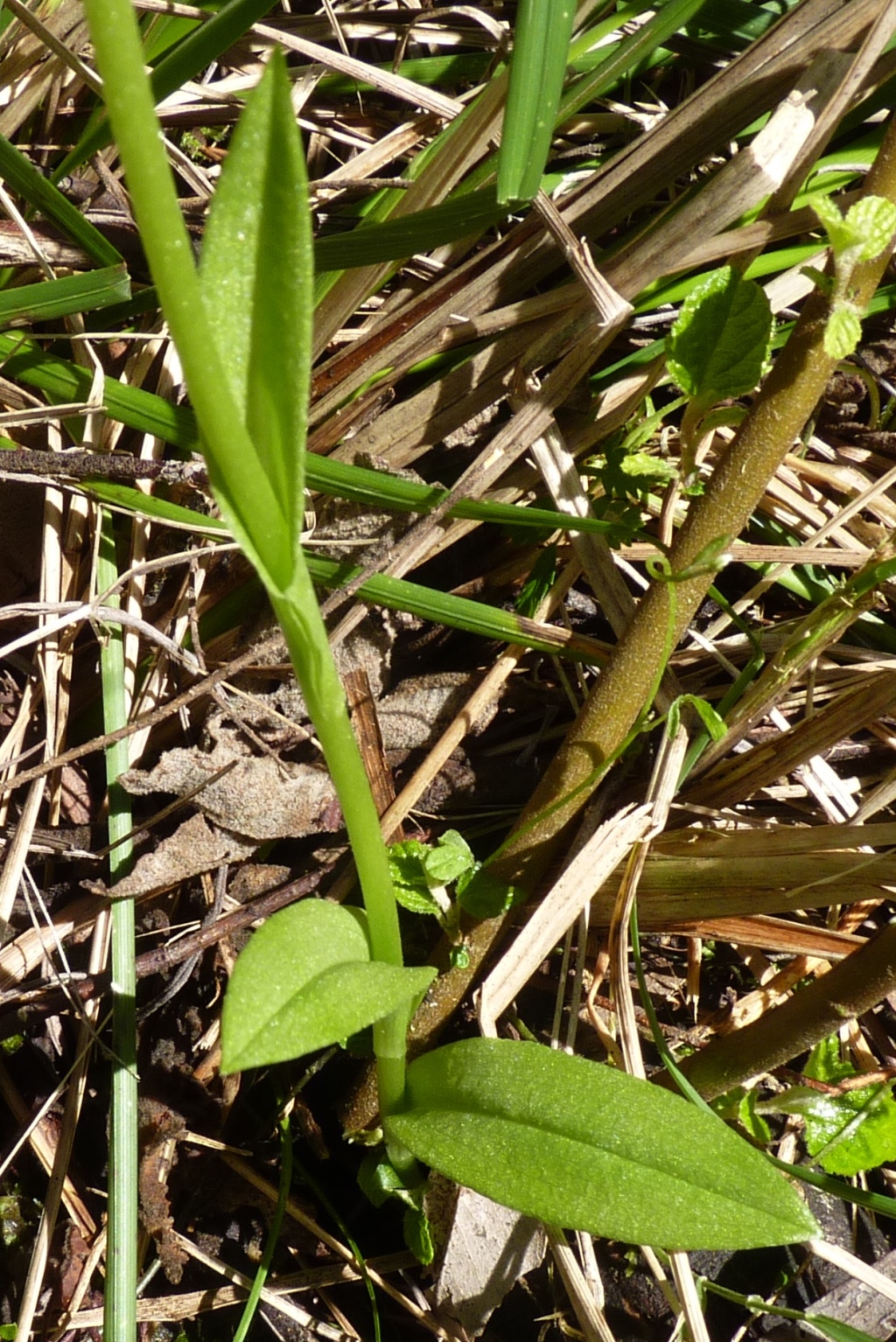Pterostylis alpina
R.S.Rogers Mountain GreenhoodFlowering plant to 30 cm tall, stem scabrous. Rosette leaves 3–5, ovate, elliptic or obovate, 2–6 cm long, 1.5–3 cm wide, scattered on the basal part of the stem, sessile, margins entire. Flower 2.5–3 cm long, erect, dark green and white; apex of galea flat or slightly decurved; dorsal sepal acute to subacute; lateral sepals erect, loosely embracing the galea leaving a lateral gap, sinus broadly notched when viewed from the front, protruding prominently in an abrupt curve when viewed from the side, free points linear-tapered, 13–18 mm long, reflexed behind the galea; petals broad, subacute. Labellum narrowly ovate-lanceolate, 12–14 mm long, 3–3.5 mm wide, dark green to brown, curved forwards above the middle, subacute, distal third protruding from the sinus in the set position. Flowers Aug.–Oct.
VVP, VRiv, GipP, CVU, GGr, DunT, NIS, EGL, EGU, WPro, HSF, HNF, OtR, Strz, MonT, HFE, VAlp. Also NSW, ?Tas. Widespread in moist forests of the foothills and ranges and extending to montane areas, commonly on sheltered south-facing slopes and near streams.
Distinguished from P. monticola by its generally smaller flower with swept back lateral sepals (erect in P. monticola). Pterostylis aneba has slightly larger flowers than P. alpina and the apex to the galea is obliquely erect.
Despite the specific epithet, the species rarely, if ever extends into alpine areas, the highest recorded altitude in the state being ca 1150 m (north of Licola), and many are below ca 400 m.
Jones, D.L. (1994). Pterostylis. In: Walsh, N.G.; Entwisle, T.J., Flora of Victoria Vol. 2, Ferns and Allied Plants, Conifers and Monocotyledons, pp. 798–830. Inkata Press, Melbourne.
 Spinning
Spinning

